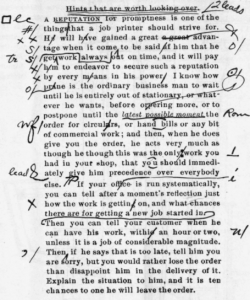 In an earlier post I noted the high expense of “gated” academic journals, and questioned why the global network of research universities has continued to use a system where academics produce research articles (sometimes at high cost), serve as peer-reviewers, and as editors, without renumeration, and then pay publishers significant fees to access the published versions of those works. Why not use low-cost (but still peer-reviewed) open-access platforms?
In an earlier post I noted the high expense of “gated” academic journals, and questioned why the global network of research universities has continued to use a system where academics produce research articles (sometimes at high cost), serve as peer-reviewers, and as editors, without renumeration, and then pay publishers significant fees to access the published versions of those works. Why not use low-cost (but still peer-reviewed) open-access platforms?
A new working paper by Adam Mossoff of George Mason University Law School provides a contrasting view. The abstract (and you can download this paper for free here):
Today, copyright policy is framed solely in terms of a trade off between the benefits of incentivizing authors to create new works and the losses from restricting access to those works. This is a mistake that has distorted the policy and legal debates concerning the fundamental role of copyright within scholarly publishing, as the incentive-to-create conventional wisdom asserts that copyright is unnecessary for researchers who are motivated for non-pecuniary reasons. As a result, commentators and legal decision-makers dismiss the substantial investments and productive labors of scholarly publishers as irrelevant to copyright policy. Furthermore, widespread misinformation about the allegedly “zero cost” of digital publication exacerbates this policy distortion.
This paper fills a gap in the literature by providing the more complete policy, legal and economic context for evaluating scholarly publishing. It details for the first time the $100s of millions in ex ante investments in infrastructure, skilled labor, and other resources required to create, publish, distribute and maintain scholarly articles on the Internet and in other digital platforms. Based on interviews with representatives from scholarly publishers, it reveals publishers’ extensive and innovative development of digital distribution mechanisms since the advent of the World Wide Web in 1993. Even more important, this paper explains how these investments in private-ordering mechanisms reflect fundamental copyright policy, as copyright secures to both authors and publishers the fruits of their productive labors. In sum, copyright spurs both authors to invest in new works and publishers to invest in innovative, private-ordering mechanisms to distribute these works. Both of these fundamental copyright policies are as important today in our fast-changing digital world as they were in yesteryear’s world in which publishers distributed scholarly articles in dead-tree format.
I don’t doubt that publishers like Reed Elsevier and Sage made substantial investments in developing online platforms for their journals. That’s not surprising – if I owned the rights to decades of scholarly articles in prestigious publications, some of which having a very valuable “brand” in the discipline, I would want to make sure I made investments in ensuring I did not lose my market position as the technology of dissemination was changing. But even in “our fast-changing digital world,” is it the case that we need commercial firms to be at the lead in investments in new technologies in academic publishing? Put another way, I have access to publications produced by nonprofit professional organizations that are of the highest quality and that have convenient online platforms. Can this not be the norm? I’m glad of Professor Mossoff’s paper, I learned from it, but I’m not sure I’m convinced …

Leave a Reply